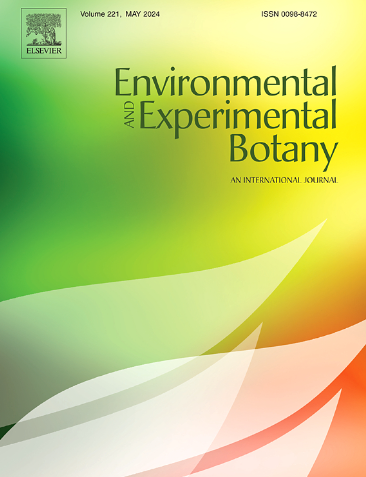北京山区不同树种出现了意想不到的水力抬升现象
IF 4.7
2区 生物学
Q2 ENVIRONMENTAL SCIENCES
引用次数: 0
摘要
根际土壤垂直水分不均一性影响植被吸收水分的方式,导致水力抬升。然而,由于地下成分的不可预测性和复杂的植物-土壤相互作用,定量和解决HL是困难的。本研究采用盆栽试验方法,通过添加重水(2H2O)形成土壤水分梯度,研究了北京山区槭(Acer truncatum Bunge)和油松(Pinus tabulformis carri本文章由计算机程序翻译,如有差异,请以英文原文为准。
Unexpected hydraulic lift occurs in different tree species in mountainous areas of Beijing
The vertical soil moisture heterogeneity in the rhizosphere affects the way vegetation absorbs water, resulting in hydraulic lift (HL). However, quantifying and resolving HL is difficult due to the unpredictability of subsurface components and complex plant-soil interactions. In this study, we investigated the HL occurrence in tree species (Acer truncatum Bunge and Pinus tabuliformis Carrière) in the mountainous areas of Beijing by pot experiments through the addition of heavy water (2H2O) to create a soil moisture gradient. The results indicated that soil moisture differences (0.107–0.204 cm3 cm−3 for A. truncatum, 0.048–0.145 cm3 cm−3 for P. tabuliformis, respectively) led to a significant occurrence of HL in both broadleaf (A. truncatum) and conifer species (P. tabuliformis). The total HL was up to 4767 and 2735 cm3, with daily fluxes of 64–1,49 and 84–1133 cm3 d−1 for A. truncatum and P. tabuliformis, respectively. The flux of HL in P. tabuliformis was lower and appeared later than that of A. truncatum. This is because P. tabuliformis will respond to drought by preferentially decreasing stomatal conductance (Gs) and transpiration rate (Tr) compared to A. truncatum. As the Tr of A. truncatum and P. tabuliformis decreased, the probability of HL occurring increased, but the fluxes gradually declined. The occurrence of HL increased the likelihood of plant water uptake from deep soils, helping to alleviate drought stress in shallow soils. This study will help to understand the water acquisition and allocation strategies of plants under drought stress.
求助全文
通过发布文献求助,成功后即可免费获取论文全文。
去求助
来源期刊

Environmental and Experimental Botany
环境科学-环境科学
CiteScore
9.30
自引率
5.30%
发文量
342
审稿时长
26 days
期刊介绍:
Environmental and Experimental Botany (EEB) publishes research papers on the physical, chemical, biological, molecular mechanisms and processes involved in the responses of plants to their environment.
In addition to research papers, the journal includes review articles. Submission is in agreement with the Editors-in-Chief.
The Journal also publishes special issues which are built by invited guest editors and are related to the main themes of EEB.
The areas covered by the Journal include:
(1) Responses of plants to heavy metals and pollutants
(2) Plant/water interactions (salinity, drought, flooding)
(3) Responses of plants to radiations ranging from UV-B to infrared
(4) Plant/atmosphere relations (ozone, CO2 , temperature)
(5) Global change impacts on plant ecophysiology
(6) Biotic interactions involving environmental factors.
 求助内容:
求助内容: 应助结果提醒方式:
应助结果提醒方式:


